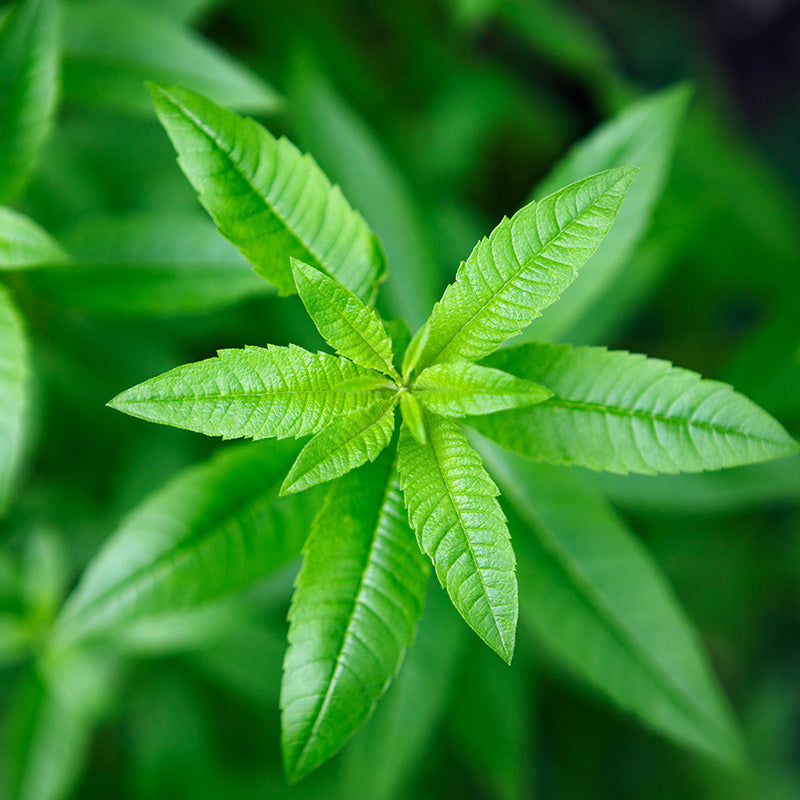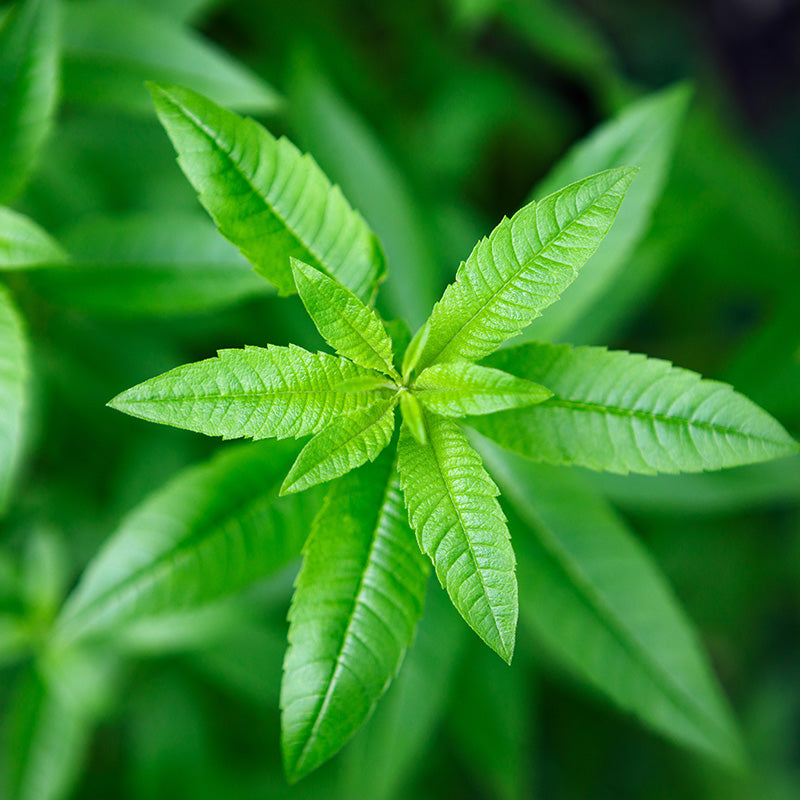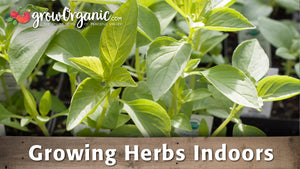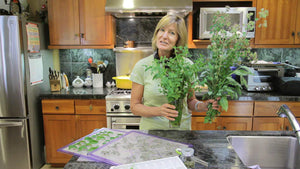Item Number: PV156
Organic Lemon Verbena
Organic Lemon Verbena
Delicate Lavender Blooms, Potent Lemon Aroma
Lemon Verbena features slender 3-inch leaves on robust branches, adorned with delicate lavender flowers attracting diverse pollinators. Renowned for its delightful lemon fragrance, a simple brush releases a heavenly scent throughout the garden. Air-dried leaves retain their enticing aroma, perfect for lemon herbal teas or flavoring sugar for baking and fruit salads. In mild climates, it goes dormant in winter, but potted plants can be brought indoors in colder regions.
Sustainably grown in 2.75" pots
Choosing the Right Location
Selecting the ideal location is crucial for the successful cultivation of lemon verbena. This herb thrives in full sun to partial shade, so choose a spot in your garden that receives at least six hours of sunlight per day. Ensure the soil is well-drained and fertile, with a pH level between 6.0 and 7.0. Lemon verbena prefers warm climates but can tolerate mild frosts, making it suitable for USDA hardiness zones 9-11. If you live in a cooler climate, consider growing lemon verbena in containers that can be brought indoors during winter.
Planting Lemon Verbena
Transplant starts outdoors after the danger of frost has passed, spacing them 12 to 18 inches apart to allow for adequate airflow. Plant them at the same depth as they were in their nursery pots and water thoroughly after planting.
Watering and Care
Lemon verbena requires regular watering to thrive, especially during hot, dry periods. Water the plants deeply but infrequently, allowing the soil to dry out slightly between waterings. Avoid overwatering, as this can lead to root rot and other moisture-related problems. Mulching around the base of the plants helps retain soil moisture and suppresses weed growth. Additionally, prune lemon verbena plants regularly to maintain their shape and encourage bushy growth.
Fertilizing
Lemon verbena is a light feeder and generally does not require heavy fertilization. However, you can apply a balanced, slow-release fertilizer in early spring to provide essential nutrients for healthy growth. Avoid over-fertilizing, as excessive nitrogen can result in lush foliage at the expense of flavor and aroma. Monitor the growth of your lemon verbena plants and adjust fertilization as needed based on their performance.
Pruning and Maintenance
Regular pruning is essential for keeping lemon verbena plants compact and productive. Prune the plants lightly in spring to remove any dead or woody growth and encourage new growth. Additionally, pinch back the tips of the stems throughout the growing season to promote branching and prevent legginess. Harvesting leaves regularly also helps keep the plants tidy and encourages fresh growth.
Pest and Disease Management
Lemon verbena is relatively resistant to pests and diseases, but it may occasionally encounter problems such as aphids, spider mites, or powdery mildew. Monitor your plants regularly for signs of pest infestations or disease symptoms, and take appropriate action to control them. Insecticidal soap or neem oil can help eliminate soft-bodied pests like aphids while pruning away affected foliage can prevent the spread of fungal diseases.
Harvesting and Storage
Lemon verbena leaves can be harvested throughout the growing season for fresh use or preservation. Harvest leaves in the morning when their essential oils are most concentrated, using sharp scissors or pruners to snip them from the stems. Avoid harvesting more than one-third of the plant's foliage at a time to ensure continued growth and vitality. Fresh lemon verbena leaves can be used immediately in teas, culinary dishes, or herbal preparations. To preserve excess harvest, dry the leaves thoroughly and store them in an airtight container away from light and moisture.
Lemon verbena is a delightful herb that adds a burst of lemony flavor and fragrance to gardens and culinary creations. By following the guidelines outlined in this guide and providing proper care and attention, you can cultivate healthy and productive lemon verbena plants in your garden. Whether used for culinary, medicinal, or ornamental purposes, lemon verbena is sure to delight your senses and enhance your gardening experience.



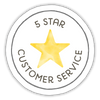

Check Your Zone Compatibility:
Compatible with your zone.
Growing Zone for
,

Our Guarantee To You
Since 1976, we've served our customers at every stage of growing. Please contact us at any time. We are happy to support and assist you.
Description
Description
Lemon Verbena features slender 3-inch leaves on robust branches, adorned with delicate lavender flowers attracting diverse pollinators. Renowned for its delightful lemon fragrance, a simple brush releases a heavenly scent throughout the garden. Air-dried leaves retain their enticing aroma, perfect for lemon herbal teas or flavoring sugar for baking and fruit salads. In mild climates, it goes dormant in winter, but potted plants can be brought indoors in colder regions.
Sustainably grown in 2.75" pots
Choosing the Right Location
Selecting the ideal location is crucial for the successful cultivation of lemon verbena. This herb thrives in full sun to partial shade, so choose a spot in your garden that receives at least six hours of sunlight per day. Ensure the soil is well-drained and fertile, with a pH level between 6.0 and 7.0. Lemon verbena prefers warm climates but can tolerate mild frosts, making it suitable for USDA hardiness zones 9-11. If you live in a cooler climate, consider growing lemon verbena in containers that can be brought indoors during winter.
Planting Lemon Verbena
Transplant starts outdoors after the danger of frost has passed, spacing them 12 to 18 inches apart to allow for adequate airflow. Plant them at the same depth as they were in their nursery pots and water thoroughly after planting.
Watering and Care
Lemon verbena requires regular watering to thrive, especially during hot, dry periods. Water the plants deeply but infrequently, allowing the soil to dry out slightly between waterings. Avoid overwatering, as this can lead to root rot and other moisture-related problems. Mulching around the base of the plants helps retain soil moisture and suppresses weed growth. Additionally, prune lemon verbena plants regularly to maintain their shape and encourage bushy growth.
Fertilizing
Lemon verbena is a light feeder and generally does not require heavy fertilization. However, you can apply a balanced, slow-release fertilizer in early spring to provide essential nutrients for healthy growth. Avoid over-fertilizing, as excessive nitrogen can result in lush foliage at the expense of flavor and aroma. Monitor the growth of your lemon verbena plants and adjust fertilization as needed based on their performance.
Pruning and Maintenance
Regular pruning is essential for keeping lemon verbena plants compact and productive. Prune the plants lightly in spring to remove any dead or woody growth and encourage new growth. Additionally, pinch back the tips of the stems throughout the growing season to promote branching and prevent legginess. Harvesting leaves regularly also helps keep the plants tidy and encourages fresh growth.
Pest and Disease Management
Lemon verbena is relatively resistant to pests and diseases, but it may occasionally encounter problems such as aphids, spider mites, or powdery mildew. Monitor your plants regularly for signs of pest infestations or disease symptoms, and take appropriate action to control them. Insecticidal soap or neem oil can help eliminate soft-bodied pests like aphids while pruning away affected foliage can prevent the spread of fungal diseases.
Harvesting and Storage
Lemon verbena leaves can be harvested throughout the growing season for fresh use or preservation. Harvest leaves in the morning when their essential oils are most concentrated, using sharp scissors or pruners to snip them from the stems. Avoid harvesting more than one-third of the plant's foliage at a time to ensure continued growth and vitality. Fresh lemon verbena leaves can be used immediately in teas, culinary dishes, or herbal preparations. To preserve excess harvest, dry the leaves thoroughly and store them in an airtight container away from light and moisture.
Lemon verbena is a delightful herb that adds a burst of lemony flavor and fragrance to gardens and culinary creations. By following the guidelines outlined in this guide and providing proper care and attention, you can cultivate healthy and productive lemon verbena plants in your garden. Whether used for culinary, medicinal, or ornamental purposes, lemon verbena is sure to delight your senses and enhance your gardening experience.
Shipping Information
Shipping Information
Cannot ship to the following states: AK, HI, PR, VI, GU
Shipping Weight: 0.5 lb
Dimensions: 6.0"L x 2.75"W x 2.75"H
Features
Features
- Container Compatible
- Long-Lived
Characteristics
Characteristics
Planting & Care
Planting & Care
Soil & Water: Plants prefer full sun to part shade and moist garden soils. Good drainage is not a necessary prerequisite.
Planting & Growing: Plant starts in late spring or early summer, once the soil has warmed up to at least 60°F (21°C). Space plants 6 inches apart.
Harvesting & Storage: Harvest leaves before flowers open and use fresh or dried.
Useful Information
Useful Information
Guarantee
Guarantee
We guarantee the perishable items we sell to be in good, viable condition when we sell them. Perishable items include, but are not limited to, garlic bulbs, flower bulbs, seed potatoes, onion sets & transplants, potted or bare root trees, vegetable crowns, etc. If your perishable item arrives in substandard condition, take photographs and please contact us within 3 days of the purchase date (or delivery date) and we will provide you with a refund of the purchase price (excluding shipping costs), or a replacement. Accordingly, we urge you to open any boxes marked as ""Perishable"" immediately upon receiving them and inspect the shipment thoroughly (do not crack open heads of garlic, we do not accept claims on cracked garlic). Because some perishable items can deteriorate very quickly, we cannot accept any claims beyond the 3-day time frame as it becomes too difficult to determine if these items were delivered in substandard condition, or if they turned into such substandard condition because of having been improperly cared for or stored once delivered.
Share
